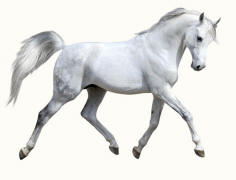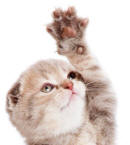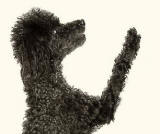Glossary

Gait
The pattern of movement of animals during (terrestrial) locomotion.
Gaits used by cats and dogs include the walk, the amble, the pace, the trot, the canter and the gallop.
Gaits used by cats and dogs include the walk, the amble, the pace, the trot, the canter and the gallop.
Limb
An appendage to the main body of an organism.
For example, an arm, leg, flipper or wing.

For example, an arm, leg, flipper or wing.

Forelimb
Either of the cranial (anterior) limbs.
Hind Limb
Either of the caudal (posterior) limbs.
Contralateral
Relating to the opposite side of the body.
For example, diagonally contralateral limbs are limbs on diagonally opposite sides of the body.
For example, diagonally contralateral limbs are limbs on diagonally opposite sides of the body.
Ipsilateral
Relating to the same side of the body.
For example, ipsilateral limbs are limbs that are on the same side of the body.

For example, ipsilateral limbs are limbs that are on the same side of the body.

Stride
The distance covered in a cycle of movement of limbs, from the initial contact with the ground of a particular limb to the next point of contact of the same limb.
Suspension Phase
A phase of a gait when all four feet are off the ground.
Also known as a period of suspension.
Also known as a period of suspension.
Suspended Trot
The trotting movement in which the animal leaves the ground during each stride.
This thereby increases the amount of ground that can be covered with a minimum increase in expenditure of energy when compared to the supported trot.
This thereby increases the amount of ground that can be covered with a minimum increase in expenditure of energy when compared to the supported trot.






